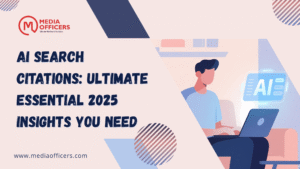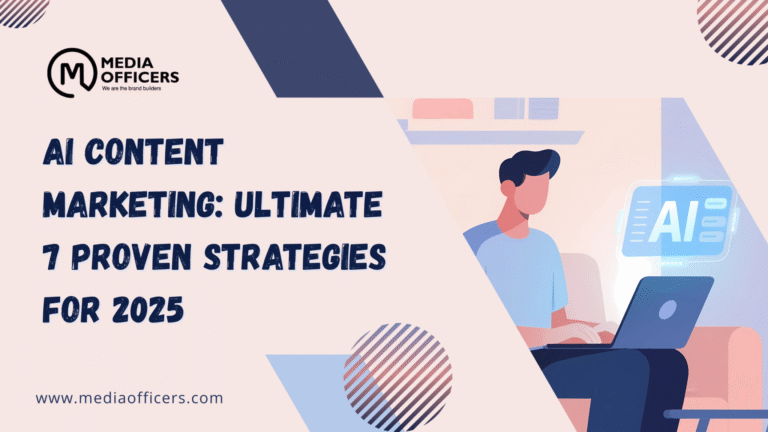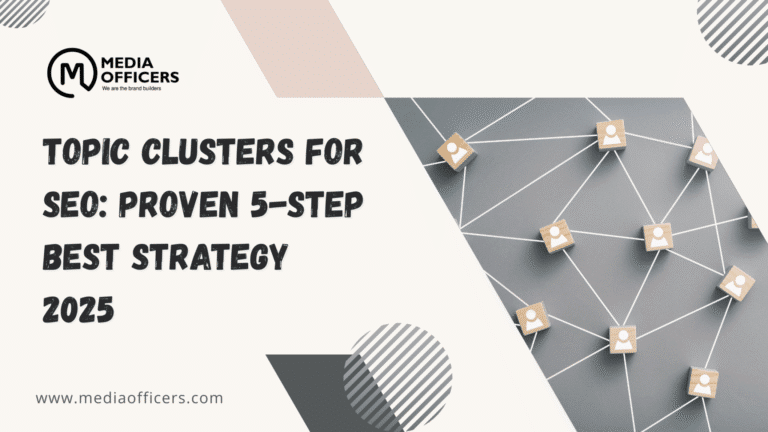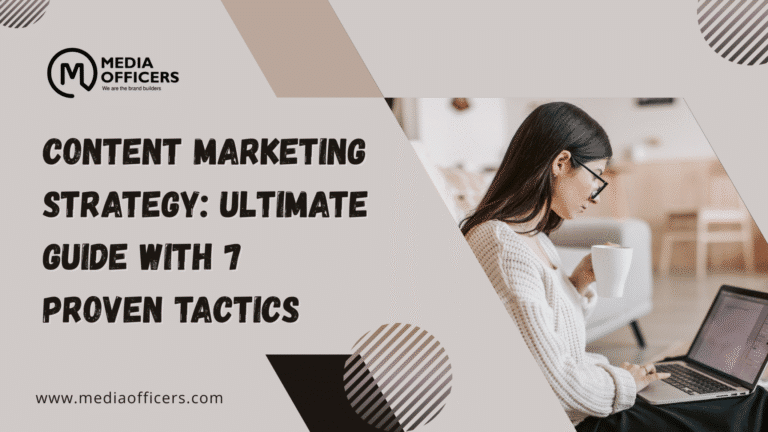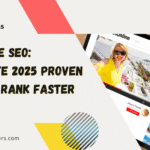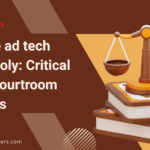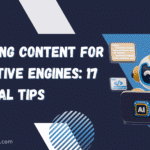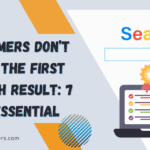AI search citations are reshaping how users trust AI-powered answers. As AI assistants condense results and surface fewer links, AI search citations act as critical trust signals that influence what people regard as credible. This article distills a comprehensive analysis of authority across 11 industries, drawing on Semrush data from more than 800 domains and responses from major AI chat engines. The result is a cross‑sector map of who gets cited, how often, and what brands can do to become a trusted reference in an AI‑first search world.
The goal is simple: understand which domains consistently surface in AI responses and why some assets are favored over others. By examining AI search citations patterns, we reveal where authority resides, how it aligns with traditional SEO signals, and what this means for strategy in 2025 and beyond. Keep reading to see which domains stand as universal anchors and how sector-specific needs reshape reference behavior.
Why AI search citations matter in a changing search landscape
In AI‑driven search, the emphasis shifts from a broad list of links to a handful of trusted sources that AI systems repeatedly surface. AI search citations function as endorsements within the model’s knowledge network, shaping user perception and click behavior. Brands that earn consistent citations gain disproportionate visibility because AI assistants refer to them as credible anchors for a given topic.
This shift affects content strategy: breadth of coverage and quality of reference material often trump sheer backlink counts. The core takeaway is that AI search citations reflect credibility networks more than raw link metrics alone, making evergreen guides, standards, and explainers powerful assets for long‑term visibility.
Universal authorities: domains that top the charts across all sectors
- reddit.com – appears in top cited URLs across nearly all sectors (the vast majority of mentions).
- wikipedia.org – a foundational reference point for quick facts and background across 11 sectors.
- youtube.com – a universal anchor for context, demonstrations, and multimedia explanations.
- forbes.com – a top source for strategic commentary and industry analysis that AI references widely.
Other domains show sector‑strong influence but broader reach as well, including amazon.com for ecommerce and related sectors, nerdwallet.com for finance expertise, and pmc.ncbi.nlm.nih.gov for health and academic citations. These anchors illustrate how AI prefers familiar, authoritative hubs that offer both depth and accessibility.
Concentration vs. diversity: how citations vary by sector
Citation concentration is not uniform. Some industries lean on a tight set of sources, while others draw from a broader ecosystem. In particular, the computers and electronics and entertainment sectors show high concentration, meaning a few hubs dominate AI references. In contrast, sectors like telecom, food and beverage, healthcare, finance, and travel demonstrate greater diversity, pulling from a wide mix of sources to answer varied user intents.
This mix matters for SEO: a diverse reference base can cushion shifts in AI preferences, while concentrated sectors reward publishers who own the leading anchors. For brands, the lesson is clear target both depth (high‑quality, authoritative guides) and breadth (coverage across related topics) to maximize AI visibility.
How AI visibility relates to SEO signals
Two metrics from the analysis are especially telling. First, AI visibility and AI mentions per domain show a strong correlation of about 0.87, suggesting that domains frequently cited by AI are quickly recognized as credible within AI systems. Second, traditional SEO scales still play a role, but with nuance: organic keywords correlate more with AI visibility (0.41) than backlinks (0.37). In other words, breadth and relevance of content matter more than links alone when AI is deciding what to surface.
Across sectors, the coupling between AI visibility and backlinks is strongest in computers and electronics, automotive, entertainment, finance, and education. This indicates that in these areas, the volume and quality of referenceable content amplify AI citations and, consequently, AI visibility.
Sector breakdowns: patterns and examples
Finance
In finance, major media brands like Forbes and Business Insider dominate AI citations, underscoring the importance of timely commentary and market analysis. Yet nerdwallet.com shows that specialists can win AI visibility by delivering evergreen guides, calculators, and nuanced comparison content that holds up over time. The correlation between AI visibility and backlink scale is among the strongest in this sector, underscoring that high‑quality links still matter when context matters to users.
Healthcare
Healthcare citations lean heavily on academic and government domains, with institutions like PubMed Central (PMC), the CDC, and national health portals at the center of AI references. Wikipedia also frequently appears as a layperson’s entry point. Diversity is more limited here, reflecting the demand for evidence‑based and peer‑reviewed content that AI models can trust for factual accuracy.
Travel and tourism
Travel content shows a broad distribution of sources, including government advisories, booking platforms, and user communities. This diversity aligns with the practical, safety, and experiential questions travelers pose. The sector’s Herfindahl-Hirschman Index (HHI) is relatively low, signaling that AI citations come from a wider set of domains rather than a single dominant authority.
Entertainment
Entertainment is driven by user‑generated platforms Reddit, YouTube, and Quora appear near the top of cited domains, with Wikipedia and IMDb also playing roles. The emphasis here is on conversational, community‑driven content, where breadth of coverage often outranks traditional backlink counts in predicting AI visibility.
Education
Citation patterns in education revolve around authoritative sources such as Wikipedia, university portals, and open courseware providers. Specialist learning platforms and forums appear, but the field is noticeably dominated by established academic references, reflecting the sector’s emphasis on credibility and structured knowledge.
Computers and electronics
This sector sees heavy weighting toward technology news and review sites CNET, The Verge, and Tom’s Guide with Wikipedia present as well. The concentration of citations around a few recognizable hubs is high, and AI visibility tracks closely with backlink scale, highlighting the competitive edge of established authority domains.
Automotive
Automotive citations balance consumer guides (for example, Autotrader) with publisher content, and include insurance and financing sources for ownership context. Citations are relatively evenly distributed across transactional and informational sources, reflecting queries that span product research, ownership, and after‑sales considerations.
Beauty and cosmetics
Beauty is a diverse mix of influencer platforms, community discussions, and brand authority. User‑generated voices often share space with established publishing brands, leading to a more varied citation landscape where social content can rival traditional articles for AI references.
Food and beverage
Recipe hubs, nutrition authorities, and community cooking sites dominate, with Wikipedia appearing for ingredient‑level explanations. The sector is characterized by low HHI values, meaning a broad set of domains contribute to AI citations, and breadth of topical coverage is particularly valuable.
Telecoms
Citations in telecoms are diverse, ranging from provider help portals to tech media and consumer advocacy sites. Forums like Reddit frequently surface in troubleshooting scenarios, and the relatively low HHI indicates no single authority controls AI references, so practical user help guides can win AI visibility.
Real estate
Real estate citations include large property listing platforms, mortgage‑related financial services, and government portals for housing data and regulation. While there is concentration, the landscape also benefits from inclusion of news sources during market explanations and condition updates.
Implications for brands and SEOs
- Reference assets matter. Evergreen guides, standards, and explainers attract citations from AI models and search engines alike. To compete with Wikipedia or government sources, brands should publish authoritative, fact‑checked material that others can cite with confidence.
- Breadth of coverage drives visibility. Domains with a broad organic keyword footprint consistently show stronger AI visibility, underscoring the value of comprehensive topic coverage rather than chasing a few high‑volume terms.
- Sector rules differ. Different sectors reward distinct signals healthcare leans on peer‑reviewed or government sources, entertainment emphasizes community and UGC, and finance benefits from explainers and calculators by expert brands.
- Fewer links, higher stakes. AI assistants often cite only a handful of sources per response. Being cited is disproportionately valuable; being overlooked means competitors dominate exposure.
- Backlinks still matter, but differently. The association between AI visibility and backlinks exists but is weaker than the link between breadth of content and AI mentions. Backlinks remain an authority signal, yet topical breadth and relevance can be more critical in AI contexts.
- User intent alignment. AI systems pull from sources that best match the intent behind a query. Brands that anticipate needs informational, transactional, or troubleshooting and deliver layered content (guides, FAQs, tools) strengthen AI visibility.
Becoming a referenced brand in an AI‑driven world
Citations in AI search results reveal the trust networks that underpin the next wave of search. While universal anchors like Wikipedia, Reddit, and YouTube set the baseline, sector‑specific authorities matter for credible positioning. The practical takeaway is straightforward:
- Develop authoritative, well‑fact‑checked assets that are easy to reference.
- Publish a breadth of content that covers related subtopics to increase the chance of AI mentions across varied intents.
- Tailor content to sector trust models, investing in the right mix of evergreen guides, tools, and explainers.
- Monitor which sources AI citations favor and adapt your asset mix to align with those signals.
Analysis methodology: how the insights were derived
The study draws on AI citation data from 11 sectors and more than 800 domains, using responses from Google AI Mode, Perplexity, and ChatGPT search. The analysis computed two primary metrics: the AI visibility score (the average share of responses citing a domain) and AI mentions (total citations per sector). These were enriched with:
- Organic keywords (Semrush)
- Backlinks (Semrush)
To measure relationships, the analysis used the Spearman correlation to capture ranking consistency rather than linear relationships. A value near +1 means the metrics rise in tandem, near -1 means they move inversely, and near 0 signals a weak pattern. The study also calculated the Herfindahl‑Hirschman Index (HHI) to gauge citation concentration scores closer to 1 indicate a tightly concentrated set of authorities, while values closer to 0 point to broader diversity.
Practical steps to improve AI visibility in 2025
- Publish authoritative reference content such as standards, explainers, and evergreen guides that are easy to cite and update.
- Expand topical breadth to cover adjacent subtopics, FAQs, and practical tools that AI models can reference for a given query.
- Align with sector trust models by investing in credible sources for healthcare, finance, and education, while leveraging community‑driven content where appropriate (e.g., entertainment and travel).
- Optimize for referenceability with clear data points, inline citations, and shareable assets that others can link to or quote exactly.
Frequently Askeded Questions
What are AI search citations?
AI search citations are the sources that artificial intelligence systems reference when answering questions. They represent the trust networks AI uses to surface credible information in responses, and they often determine which domains gain visibility in AI‑driven search results.
Which domains are universal authorities across sectors?
Universal anchors include reddit.com, wikipedia.org, youtube.com, and forbes.com, with additional near‑universals such as linkedin.com and quora.com. These domains repeatedly surface as credible references across many topics and AI systems.
How can brands improve their AI search citations?
Focus on authoritative, evergreen content, expand topic breadth, and tailor assets to sector trust models. Create referenceable assets like guides, calculators, and standards, promote credible sources within your content, and ensure your content is easy to cite with clear data points and citations.
Do backlinks still matter for AI search citations?
Yes, but the impact is nuanced. Backlinks correlate with AI visibility, but the strength of breadth of coverage and content relevance often drives AI mentions more than sheer backlink counts. A balanced strategy that builds high‑quality links while expanding topic coverage tends to perform best for AI citations.
Conclusion
As AI search citations become a central mechanism for how information is retrieved and trusted, brands must adapt by becoming the go‑to reference across their topic areas. The universal anchors Wikipedia, Reddit, YouTube, and Forbes set the baseline, but sector‑specific authorities matter deeply for credibility and AI visibility. By emphasizing authoritative reference assets, broad topical coverage, and intent‑aligned content, brands can increase their chances of being cited in AI‑driven answers. In 2025 and beyond, AI search citations will continue to shape visibility, and those who publish reliably referenceable content will lead the way.

